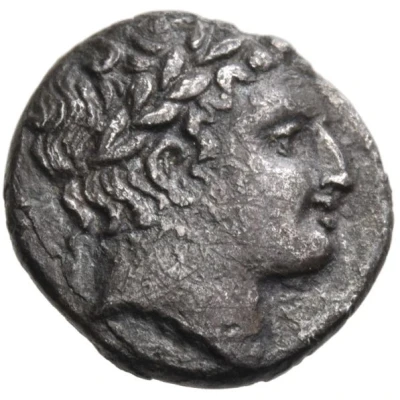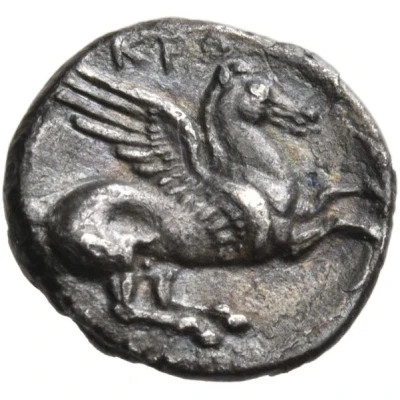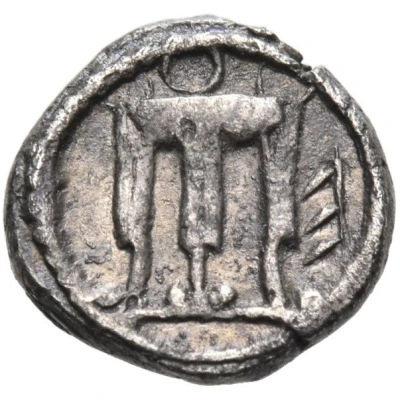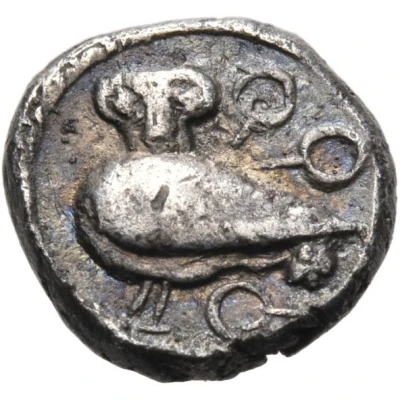


© Nomos AG
Diobol 300 BC - 250 BC
| Silver | 1.02 g | 10.5 mm |
| Issuer | Kroton (Bruttium) |
|---|---|
| Type | Standard circulation coin |
| Years | 300 BC - 250 BC |
| Value | Diobol (⅓) |
| Currency | Achaean drachm |
| Composition | Silver |
| Weight | 1.02 g |
| Diameter | 10.5 mm |
| Shape | Round (irregular) |
| Technique | Hammered |
| Orientation | Variable alignment ↺ |
| Demonetized | Yes |
| Updated | 2024-10-09 |
| Numista | N#430066 |
|---|---|
| Rarity index | 100% |
Reverse
Pegasos flying to right.
Script: Greek
Lettering: ΚΡΟ
Comment
Cf. HN Italy 2196 and SNG ANS 423 (drachm).
Interesting fact
The Diobol coin from Kroton (Bruttium) was used as a form of currency in ancient Greece and has a unique design. One interesting fact about this coin is that it features the image of a mythical creature called a "dolphin-fish" on one side, which was a symbol of the city of Kroton. This coin was also used as a means of exchange for goods and services, and its value was equivalent to two obols, which was the standard unit of currency at the time.



